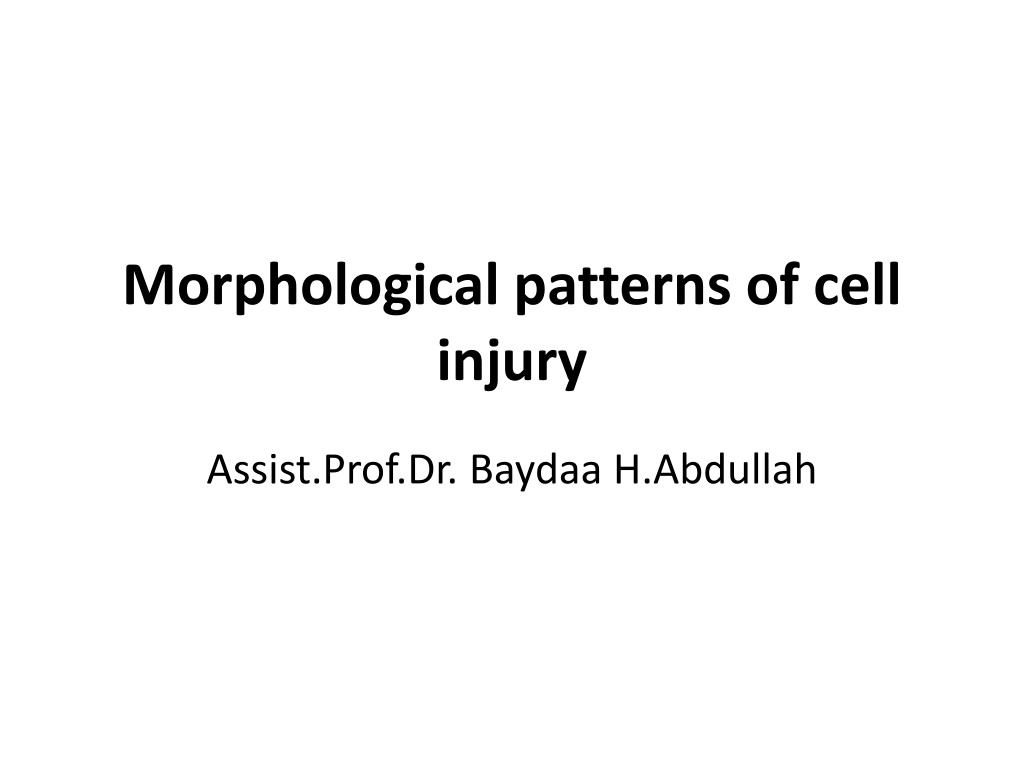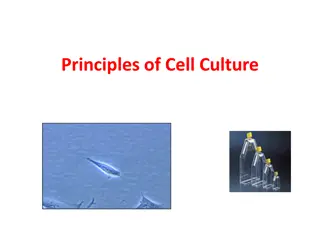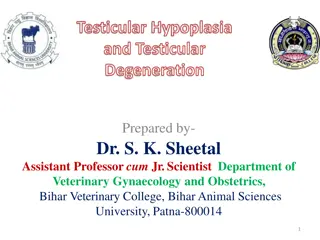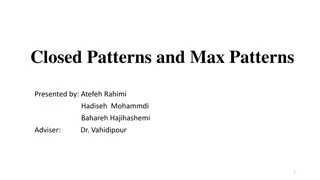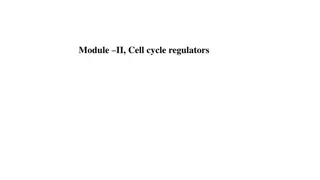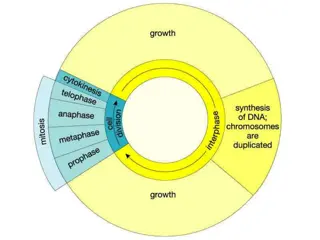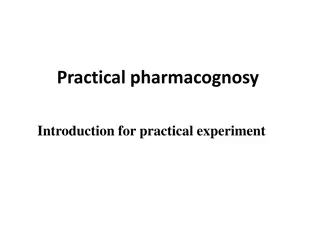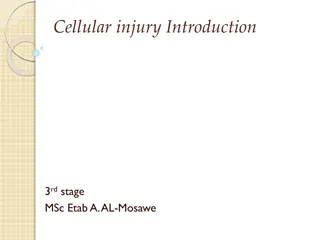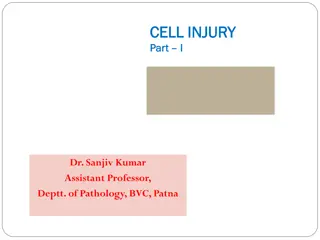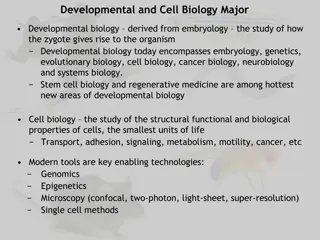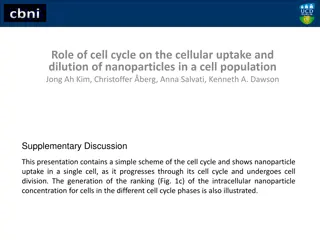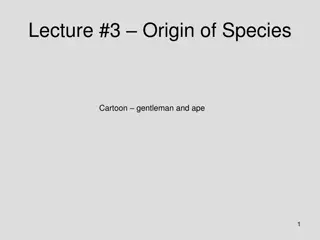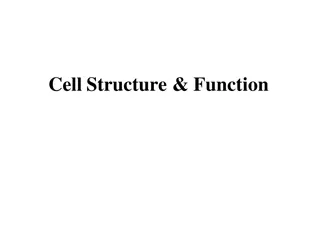Morphological Patterns of Cell Injury and Degeneration
This informative content discusses morphological patterns of cell injury, focusing on reversible cell injury or degeneration caused by intracellular and interstitial accumulations. It covers classifications such as primary changes in the cell, intracellular accumulation of water, fat, carbohydrates, and proteins, as well as interstitial accumulations like amyloid, hyaline, mucinous, and fatty infiltrations. The etiology of these changes, including causes like starvation, obesity, malnutrition, and chronic illnesses, is also explored. Detailed descriptions and images aid in understanding the various degenerative processes affecting cells.
Download Presentation

Please find below an Image/Link to download the presentation.
The content on the website is provided AS IS for your information and personal use only. It may not be sold, licensed, or shared on other websites without obtaining consent from the author.If you encounter any issues during the download, it is possible that the publisher has removed the file from their server.
You are allowed to download the files provided on this website for personal or commercial use, subject to the condition that they are used lawfully. All files are the property of their respective owners.
The content on the website is provided AS IS for your information and personal use only. It may not be sold, licensed, or shared on other websites without obtaining consent from the author.
E N D
Presentation Transcript
Morphological patterns of cell injury Assist.Prof.Dr. Baydaa H.Abdullah
Reversible cell injury It is called also degeneration .It is accumulation of normal substances (glycogen ,water) or abnormal (Amyloid) inside the cell due to injury agent. classified into two main groups 1-those with primary change in the cell. 2-Those with interstitial accumulation compressing the cell
Classification of degeneration : 1-primary changes in the cell. Intracellular accumulation of water (cloudy swelling ,hydropic & vacuolar changes ). Intracellular accumulation of fat.(fatty change) Intracellular accumulation of CHO. Intracellular accumulation of proteins.
2-interstitial accumulation compressing the cells. Amyloid Hyaline change.(hyaline degeneration) Mucinous change.(Mucoid degeneration) Fatty infiltration.(fatty degeneration)
Intracellular accumulation of water 1-cloudy swelling results from impaired cellular regulation for Na , when Na enters the cell ,water will follow to maintain the isoosmotic condition cellular swelling . This type of cellular degeneration occur in paranchymus organs such as liver, kidney and heart. Etiology: 1-physical like heat in burn 2-chemical 3-bacterial 2-Hydropic change occur where water transfer is most active e.g. in renal tubular epithelium after I.V administration of hypertonic glucose or in hyperkalemia
Intercellular accumulation of lipid Fatty change: is the accumulation of neutral fat within parenchynal cells. Seen in the liver, heart, skeletal muscle, kidney and others. Why is it common in the liver? Because the liver plays central role in fat metabolism. The fatty change may be mild reversible or producing severe irreversible cell injury and death. This depends on the cause and amount of fat accumulation
Etiology (cause) of fatty change Starvation Obesity Malnutrition Alcoholism Diabetes mellitus Chronic illness like T.B Late pregnancy Liver toxin Drugs estrogen, steroid, tetracycline
Interstitial accumulations 1-Hyaline change It is glassy homogenous, eosinophilic material, could be seen intra or extra cellular and it is not specific substance. This type of degeneration occur after necrosis of tissue. 1-connective tissue: blood vessels fused together& it seems homogeneous mass. 2-Epithelial tissue: kidney, liver 2-Fatty degeneration(stroma fatty infiltration ) It differs from fatty change, it is the deposition of mature adipose cells in the stromal connective tissue. In obese patient. 3-Amyloidosis Amyloid is fibrillar material which is laid down in the tissues, usually extracellularly associated with chronic inflammation.
4-Mucoid degeneration This type is derived from mucus which is mucin like substances with jelly appearance. Normally mucin is secreted by goblet cells of columnary epithelium of respiratory tract &gastrointestinal tract. 5-Fibrinoid degeneration The deposition of fibrin like protineaceous material in the arterial walls. Often this type of degeneration associated with immune mediated vascular damage.
Irreversible cell injury: Necrosis Is sequence of morphological changes that follows cell death in a living tissue and always associated with inflammation two important changes leads to irreversible cell injury, they are: Cell digestion by lytic enzymes Denaturation of proteins
Cytoplasmic changes in necrosis Appears homogenous Intensely eosinophilic because A- loss of basophilic effect of RNA. B- binding of eosin to denatured proteins Sometimes vaculuolation or calcification.
Nuclear changes in necrosis: Pyknosis ( condensation of nuclear chromatin) Karyolysis ( dissolution of nuclear chromatin ) Karyorrhexis (fragmentation)
Morphological types of necrosis 1-Coagulative necrosis:( when denaturation predominates ) Cause: sudden cut in blood supply in all tissues except the brain and less often from bacteria and chemical agents . e.g. myocardial infarction ,ischemia (local anemia) 2-Liquefactive necrosis It frequently occurs in brain tissues and results from break down of neurons by released lysosomal enzymes resulting in formation of pockets of liquid, debris and cyst like structures in the brain tissue. Cause: ischemia bacterial infection (autolysis) 3-Caseous necrosis Caseous Necrosis: - is a good example of structureless necrosis. It is common in tuberculosis and is characterized by central area of necrosis which is soft, friable and surrounded by an area with a cheesy, crumbly appearance.
4-Fat necrosis: are two types Enzymatic : occur in pancreas, caused by enzymatic digestion. Pathogenesis: lipase activation and liberation will digest the fat and split it into Glycerol &F. a which will unite with calcium chalky white material. Traumatic : occur in female breast caused by trauma Pathogenesis trauma adipocyte will rupture and liberate fat which will act as foreign material Stimulate inflammatory reaction. The macrophage will surround the area and ingest the fat ( lipid laden macrophage), later fibrosis will occur this will stimulate carcinoma.
5-gangerous necrosis It is death of tissue + putrefaction. It is coagulative necrosis + liquefactive if the coagulative necrosis is predominant, then it is a dry gangrene If the liquefactive necrosis is predominant then it is wet gangrene
1-Wet gangrene Site: moist areas ( lung, vulva, diabetic foot) Cause: block of an artery or vein with stasis of blood + bacterial growth * rapid development * NO line of demarcation between the normal and abnormal areas .the affected part is swelled * there may be a spread of infection to the circulation (septicemia)
2- dry gangrene Site: distal parts of the foot ( arterial sclerosis) * it develops slowly * NO bacterial growth * there is a line of demarcation in which the dead area appears black color. The affected part is shrinked
3- gas gangrene (wet gangrene) Cause: the infection is with gas forming m.o. e.g. clostridia which enters by : Open wound or as complication of colonic surgery clostridia produce various toxins that lead to necrosis and edema and usually associated with systemic manifestations.
